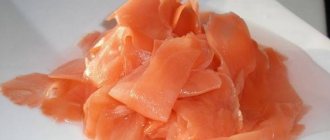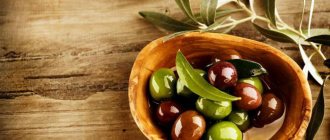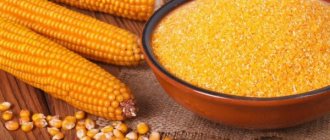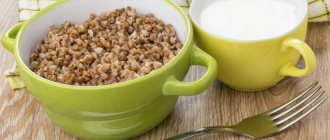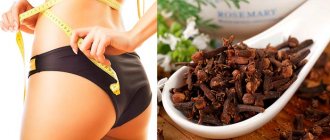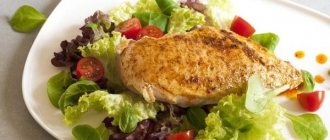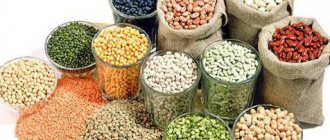What is blue tea? Originating from Southeast Asia, blue tea has been around for centuries and is derived from the Clitoria ternatea plant, also known as butterfly pea, blue pea, or Asian pigeon wing. It has recently gained popularity due to its health benefits. Caffeine-free herbal blue tea is actually an infusion.
Blue pea flowers are infused with hot water to create this rich, vibrant, floral-scented blue tea. So it's actually a decoction; herbal mixture made from an infusion of leaves or herbs. The distinctive features of this vibrant drink are its mesmerizing color and its extraordinary ability to change color, like a mood ring, with changes in its pH value. By simply adding a few drops of lemon juice, you transform blue tea into the most gorgeous purple tea. Blend a few hibiscus leaves to create a wonderful red tea. Blue tea has many health benefits, making it not only an eye-pleaser but also a healthy drink.
Blue tea: distribution of the plant and history of drinking the drink
Seeing how few people know about blue tea, you might think that it was recently discovered. However, this brightly colored drink has long been part of the culture of Thailand, Vietnam, Bali and Malaysia.
Originating from Southeast Asia, blue tea, unlike other teas, was not derived from Camellia Sinensis (the tea plant). As mentioned, blue tea is instead obtained from the plant Clitoria ternatea, also called butterfly pea, blue pea or Asian pigeon wing. The flower shape of Clitoria ternatea was thought to resemble female genitalia, hence the name "Clitoria" from "Clitoris".
The butterfly pea plant is native to South Asia and is part of the legume family. The blue tea plant, the butterfly pea, has been used for centuries for dyeing, cooking and cosmetics.
Blue tea is made from a combination of dried butterfly pea flowers and lemongrass. An earthy-flavored blue tea mixed with lemon and honey, it is commonly consumed after dinner, at spas, or as a refreshing drink in Thailand and Vietnam.
Known in Thailand as Nam Dok Anchan tea, this drink is often flavored with mint, cinnamon, ginger and passion fruit and enjoyed either hot or cold. Malaysians use the blue tea plant to make their popular dish, Nasi Kerabu. Nasi Kerabu is a Malay rice dish in which blue colored rice is eaten with fried fish or chicken, salad, pickles and crackers.
Malaysians also use blue tea to make their traditional dessert, kuih or kueh. However, its most common use is to create the mood ring cocktail; This cocktail is topped with ice cubes of blue tea, which changes color from bright blue to bright magenta (bright purple) as the ice cubes dissolve.
Contraindications
To use Anchan without harm to health, you must remember that you need to drink it in moderation - no more than three cups a day. It is not recommended to use Chang Shu for pregnant women and during lactation, and for young children; it is also contraindicated for people with kidney pathologies, since it contains a large amount of fluoride and anchan has diuretic properties. Flowers of the butterfly pea have sedative and calming properties, respectively, they reduce attention and slow down the speed of reactions, so after consuming them it is better to refrain from driving a car and not to schedule important tasks. If individual intolerance or an allergic reaction occurs, you should completely stop drinking tea.
Health Benefits of Blue Tea
There are people who enjoy drinking blue tea solely because of its magnificent color. However, there is more to Thai Anchan tea besides its bright color.
Recent studies have shown that blue tea has positive effects on human health, including having immunostimulating properties, improving cognitive (mental) abilities and promoting weight loss .
Blue tea has long been a part of Ayurveda (ancient Indian medicine), and, as published in the journal Ethnopharmacology, “has been used for centuries as a means to improve memory and mental performance, relieve anxiety and fear, as an anti-stress, anticonvulsant, tranquilizing and sedative means". It seems that a decoction of Clitoria ternatea flowers will soon conquer all supporters of a healthy lifestyle.
Blue tea is effective for weight loss
With increasing awareness of the health risks associated with obesity, more and more people are looking for ways to lose weight and stay fit. Drinking tea for weight loss has been quite a popular trend, and it seems that Thai Nam Doc Anchan tea might just be the new weight loss tea.
According to one study published in the International Journal of Obesity and Related Metabolic Disorders, blue tea helps with weight loss by preventing and combating the development of fatty liver disease. Fatty liver disease causes weight gain, especially in the abdominal area. Blue tea helps burn belly fat by protecting against fatty liver disease.
An important component in blue tea is the catechin EGCG, epigallocatechin gallate, which speeds up the process of burning calories by increasing metabolism. Research has shown that blue tea contains higher levels of the compound EGCG compared to other teas, making it a powerful weight loss drink.
The antioxidants found in blue tea have anti-inflammatory and diuretic properties that help detoxify the body and help in losing weight accumulated due to water retention. Enjoy a cup of this gorgeous, colorful drink after your meal to flush out toxins and speed up your metabolism.
Blue tea is natural paracetamol
If you have a fever and only have blue tea, then you have nothing to worry about because you have all-natural paracetamol. The results, published in the journal Phytomedicine, showed that blue tea has antipyretic properties and produces effects similar to those of paracetamol, a pain reliever and antipyretic.
According to one study, blue tea extract, when administered in doses of 200 to 400 milligrams, was effective in reducing body temperature within five hours of ingestion.
The decoction helps lower body temperature by causing the blood vessels under the skin to dilate. This promotes the transfer of heat to the blood and lowers the temperature.
Blue tea is good for the eyes
Blue tea is also called "Bunga Telang" in Indonesia, which means "clear vision" and is very beneficial for maintaining eye health.
Residents of Bali use blue tea as a natural remedy to treat eye diseases. This drink is also quite popular on other islands of Indonesia for the same reason.
The blue tea plant, Clitoria Ternatea, contains beneficial antioxidants. One such antioxidant is proanthocyanidin, which is responsible for increasing blood flow to the capillaries of the eyes.
This makes this herbal tea effective in treating retinal damage, glaucoma or lens opacities.
Blue tea is effective against stress, anxiety and depression
If working long hours is causing you stress and anxiety, drink blue tea. The drink has been used as a stress reliever since ancient times. Anchan has an adaptogenic effect on your body and relieves stress.
The antioxidants found in blue tea have been shown to lift your mood and calm your nerves, promoting good sleep. According to one study published in the journal Pharmacology, Biochemistry and Behavior, blue tea was shown to have positive effects on the central nervous system of mice. The study also found that blue tea was effective against depression, stress and anxiety . So, fill your cup with blue tea, which will not only please the eye, but also calm the nerves.
Blue tea may be effective for diabetics
Diabetes was the direct cause of 1.6 million deaths in 2016. Although we still don't have an effective treatment for it, research shows that color-changing blue tea is actually effective for diabetics in controlling blood sugar levels and treating type II diabetes.
Drinking a cup of blue tea between meals has been shown to regulate and reduce blood glucose levels. Blue tea prevents excess absorption of glucose from food and hence helps control blood sugar levels. According to a study conducted on diabetic rats, published in the Journal of Applied Pharmaceutical Science, blue tea extract was found to significantly reduce serum glucose levels and increase body weight.
The study concluded that blue tea extract showed antidiabetic properties similar to those of the antidiabetic drug glibenclamide.
Blue tea is good for the heart
Blue tea is loaded with antioxidants that not only protect you from infections but also help keep your heart in good shape.
Research has shown that blue tea is effective in reducing high cholesterol, a major risk factor for heart disease. Blue tea protects against heart disease by reducing hyperlipidemia. Hyperlipidemia is an abnormally high concentration of lipids (fats) in the blood.
It is also a risk factor for heart disease, including thrombosis, blood clotting disorders, and angina. According to a 2010 Pharmaceutical Biology study, butterfly pea extract taken along with the herb Vigna mungo significantly reduced serum total cholesterol levels.
It also showed significant reductions in triglycerides and low-density lipoprotein (LDL) cholesterol.
Blue tea is filled with antioxidants and is caffeine-free
Why buy supplements when you can get all the antioxidants you need in blue tea?
Blue tea contains beneficial antioxidants; in fact, it is the only tea that has antioxidant levels comparable to green tea. Free radicals are responsible for chronic inflammation, low immunity and a number of other diseases, including cancer.
An antioxidant called Proanthocyanidin found in blue tea provides protection against oxidative damage caused to cells by free radicals. Cyclotides found in blue tea are free radical fighting peptides. And it seems there's more... Blue tea is also rich in flavonoids, which strengthen the immune system and help fight disease. Moreover, blue tea also acts as an expectorant and helps relieve cough and asthma.
The big benefit of blue tea is that you can benefit from the calming properties of tea without the jitters caused by caffeine. Since blue tea is not made from the Camilla Sinensis plant, it does not contain caffeine. This means you can enjoy another cup of blue tea without feeling guilty.
Blue tea promotes rejuvenation
Clean, rash-free, youthful skin is everyone's dream. Blue tea is loaded with antioxidants, which are great for your hair and skin and prevent premature aging by fighting free radicals.
Blue tea contains a compound called anthocyanins, which increases blood flow in the capillaries of the scalp and strengthens hair follicles. For centuries, the people of Thailand have used the blue tea plant and butterfly pea herb to treat premature graying and male pattern baldness.
Skin shows signs of aging as a result of a protein-damaging process called glycation. Blue tea has anti-glycation properties, which means it inhibits the glycation process and keeps your skin youthful. Elastin and collagen are important compounds that keep skin youthful by preventing wrinkles and maintaining skin elasticity.
The flavonoids found in blue tea have been found to increase collagen and skin elasticity. One such flavonoid found in blue tea is quercetin, which strengthens hair and skin cells and retains water in skin cells.
Blue tea is good for the brain
Blue tea has also been linked to good brain health. Research has shown that the antioxidants found in blue tea increase mental alertness, improve cognitive performance and memory, and are beneficial for the central nervous system.
Animal studies have shown that blue tea extract improves memory, treats depression, calms nerves and enhances cognitive abilities. However, there is still a lot of research that needs to be done on this issue. One study found that blue tea extract at a dose of 50 to 100 mg/kg improved memory in rats over 30 days. Another study found that the root extract of the blue tea plant was more potent than the leaves or stem extract. Acetylcholine is a compound responsible for effective communication between nerve cells. As we age, acetylcholine levels decrease, causing memory loss and other brain-related problems.
Blue tea contains acetylcholine, and regular consumption of blue tea can prevent memory loss and improve memory and cognitive skills. Grab a cup of blue tea and recharge your batteries.
Blue tea has anti-inflammatory properties
According to a study published in the “International Research Journal of Pharmacy,” the antioxidant content of blue tea is high enough to combat inflammation in the body.
The large amount of antioxidants present in blue tea is responsible for its anti-inflammatory properties, which not only help reduce inflammation but also protect against a number of chronic diseases. Blue tea extracts also exhibit anesthetic properties and, as such, have been used for centuries to relieve pain. It has been proven that blue tea is equally effective in treating inflammation of various locations.
The flavonoids found in blue tea strengthen the immune system, allowing it to fight inflammation and infections. Indian studies have shown that blue tea extract has significant antimicrobial properties against Staphylococcus aureus.
How Anchan tea helps with weight loss
Thai blue Anchan tea, whose properties for the breakdown of adipose tissue are due to the presence of polyphenols in its composition, is successfully used for weight loss also due to the acceleration of metabolic processes.
The drink promotes:
- cleansing the body of toxins and waste;
- normalization of metabolic processes;
- decreased appetite;
- improving the condition of the skin, because often after losing weight in problem areas, the skin begins to sag.
Side effects
Blue tea, as studies show, is an absolutely safe and healthy drink. So far, there have been no reported side effects associated with blue tea or blue matcha, the powdered dried flowers of the Clitoria ternatea plant. However, the Home Remedies book does indicate that an herbal preparation of powdered seeds and leaves of the blue tea plant can cause severe nausea and diarrhea.
Pregnant or breastfeeding women should avoid blue tea , as there is little data on its effects on them. Again, if in doubt, consult your doctor!
Additionally, if you are taking any medications, it is recommended that you get your doctor's approval before drinking blue tea.
Regarding the safety and toxicity of blue tea, a study evaluating the toxicity of blue tea extract when taken orally at doses up to 3000 mg/kg body weight did not find any symptoms of intoxication. However, if you experience any discomfort or other symptoms, consult your doctor immediately.
To whom is the drink contraindicated, and what harm does it cause?
Given the indicated benefits, drinking blue tea should be avoided if:
- The presence of allergies or intolerance to the plant.
- Pregnancy.
- Breastfeeding.
- Kidney pathologies.
- Anemia (tea interferes with the absorption of iron).
- Low blood pressure.
- Taking medications that relieve blood clotting.
- Children under 3 years of age.
- Problems with blood clotting.
The most common side effects from constant drinking of tea in large quantities are presented in the table below.
| What can happen | How it manifests itself |
| Increased calming effect | Headaches, lethargy, fatigue, slow reactions |
| Diuretic effect | Leaching minerals and vitamins from the body |
Blue tea recipes
Thai Anchan blue tea is often ground into a powder called blue matcha. Its use is becoming increasingly popular in cooking and for coloring cocktails and coffee blue.
The many health benefits of blue tea must have convinced you to grab a cup of this mesmerizing drink. Blue tea is quite easy to prepare and can be served either hot or cold.
Hot blue tea recipe
Ingredients:
- 1 cup hot water;
- 1 teaspoon (heaped) blue tea leaves or 10 dried flowers.
Cooking method:
Pour hot water into a glass or mug. Add tea leaves and leave for 15 minutes. You will see the blue color of the leaves soaking in the water, turning it a beautiful indigo color. Once the leaves have released most of their color, strain the blue tea. Your cup of blue tea is ready to drink. You can add flavorings such as cinnamon, ginger, lemongrass and honey. Adding lemon, of course, will give you a beautiful magenta (violet) color. And a handful of hibiscus leaves will give you bright red tea.
Blue tea lemonade
Cool and refreshing; This will undoubtedly be your favorite summer drink. It will also likely impress your friends, especially if you use the color changing tricks described earlier.
Ingredients:
- 1 cup hot water;
- 2-3 teaspoons of butterfly pea tea (blue tea);
- crushed ice;
- lemon juice from 1/2 lemon;
- honey or sugar to taste.
Cooking method:
Pour hot water into a glass or mug. Add tea leaves and cover with a lid. Let sit for about 15 minutes until the water turns indigo. Strain the tea, add lemon juice and marvel at the changing colors. Add honey or sugar and crushed ice on top.
Blue matcha cakes
Advantages and disadvantages
Sellers talk about the unique properties of tea with a blue tint, but rarely specify where the tea leaves came from or how to properly use it for healing and weight loss. The place of origin plays a decisive role and affects the composition and properties of the drink.
We recommend reading
- Effective Chinese teas for weight loss
- Advantages and disadvantages of Tibetan tea
- Turboslim cappuccino for weight loss: composition, harm and benefits
From China
Blue oolong is harvested exclusively in two main places - Taiwan and China. Chinese and Taiwanese blue tea is considered to be of the highest quality in taste and resistant to frequent brewing. For its cultivation and production, technologies developed several hundred years ago are used.
The finished product has unique properties. Its leaves are tightly rolled into a tube, blooming after falling into hot liquid. High-quality, properly prepared tea can withstand 15 spills.
A properly brewed drink has shades that start from pale golden and reach a soft peach. Characterized by a long-lasting honey taste.
When harvesting, only the top 3 leaves are removed from the branch. The work is carried out at dawn, when the leaves reach towards the sun. The collected raw materials are placed in one container and moved to a dark place for storage. Here blue oolong undergoes a fermentation process.
The finished drink is extremely tasty. Many become fans from the first sip. This is the standard grade of tea. It's hard to fake.
From Thailand
The Thai version of blue tea is different from the Chinese one. This is not a separate variety, but a collection of different species with different names. The product is called Thai anchan, clitoria, purple tea, blue pi, pu-erh, etc.
Thailand offers a collection based on orchid leaves. The infusion from it is not as rich as that of the standard variety. The aroma is richer, but the taste is lighter and softer. It has beneficial properties, strengthens the body, improves vision, the functioning of internal organs and restores metabolism. The composition includes vitamin D, magnesium, phosphorus, calcium, iron, vitamins C, E and potassium.
Thai tea is useful for weight loss due to the presence of caffeine, theanine and cahetin. In Eastern medicine, its cleansing and healing properties are valued.
Popular names are Milk Oolong, Ginseng, Da Hong Pao, Formosa, Dong Ding Oolong.
In Russia you can purchase analogues of natural teas from distributors. Names - Yinghua Zhou Du from Jumlo, Chang-Shu purple and others. The pharmacy offers Garcinia from Evalar, Green Coffee and other natural preparations.
Despite the variety of products, experts advise drinking natural blue anchan herbal tea, made from orchid leaves that grow in the vast expanses of Thailand.
Where to buy Thai blue tea and blue matcha
If you are lucky enough to vacation in Thailand, you can bring Thai blue tea Anchan with you from your trip along with other souvenirs. The normal price of a pack of blue tea in Thailand: 60 - 100 Thai baht per 100 gram pack. If they ask for more, bargain or buy elsewhere. Finding Anchan tea in Thailand is not a problem . Where to look:
- In Pattaya, Phuket, Chiang Mai, Koh Samui, Hua Hin : at night markets, in tourist shops, in pharmacies;
- In Bangkok : at the Chatuchak market, from merchants in Chinatown (the area around Yaowarat Street), in traditional medicine pharmacies;
- In non-tourist places in Thailand : in pharmacies, markets, street vendors. Do not hesitate to ask the local population - Thais.
Buying anchan tea and blue matcha (ground powder of dried flowers of Clitoria ternatea) on the Internet is also not a problem:
- on Amazon;
- There are many sellers from Thailand selling Thai blue tea on eBay
- iHerb sells blue tea powder - the so-called blue matcha;
- in niche foreign and Russian online stores . If you Google in English looking for Western sellers, then dried butterfly pea tea is blue tea in English. And blue matcha is called either blue matcha or blue butterfly powder.
Our review of the top 10 best products on iHerb will certainly be useful to those who are interested in healthy lifestyle products.
Chemical composition and calorie content
Thai blue Anchan tea, the properties of which are determined by its composition, contains:
- Vitamins C, K, E, D, group B.
- Micro and macroelements (manganese, copper, iron, calcium, phosphorus, potassium, boron).
- Flavanoids and ash.
- Essential oils.
- Anthocyanins give tea a bright blue hue.
- Saponins and phytosterols.
- Amino acids and organic compounds.
The composition of the tea is very similar to rosehip decoction, and its calorie content is only 35 kcal per 100 g. This is one of the main reasons for drinking blue tea to lose weight.
Questions and answers
Coffee with blue matches
What does blue tea taste like? Don't expect it to taste like regular tea or even most infusions. Blue tea has a woody and earthy flavor, much like green tea, although it is actually an herbal tea.
Does blue tea have caffeine? Blue tea is a flower tea without caffeine. Although many representatives of flora and fauna may contain trace elements of caffeine. If you are drinking tea derived from the Camellia Sinensis tea plant, then expect higher levels of caffeine.
Do you add sugar to blue tea? Although you usually drink blue tea as is, yes, sugar can be added to blue tea if you really need to sweeten the taste. However, it is not recommended to add milk to blue tea.
Is it possible to drink iced blue tea? Blue tea is usually served hot, or at least pleasantly warm. However, if desired, yes, blue tea can be drunk cold.
The benefits and harms of trifoliate clitoris tea
The main benefit of blue tea for weight loss is calming. The composition contains useful enzymes that relieve nervous tension, stress or depression .
Also, the benefit of blue pea drink is that it:
- Improves memory and concentration levels.
- Improves vision and its sharpness.
- Relieves eye strain, for example, after reading in semi-darkness.
- Improves hair condition, restores damaged curls.
- Strengthens the immune system.
- Gives the skin a healthy color.
- Gives a feeling of fullness.
- Speeds up digestion.
- Reduces blood pressure.
- Cleanses blood vessels and improves blood circulation.
- Serves as a preventative against cancer.
The main disadvantage of the purple drink is its diuretic effect . With frequent use, it flushes vitamins and microelements from the body. Therefore, drink several cups of butterfly pea tea 2-3 times a week.
“Drink Thai tea for weight loss in moderation so as not to harm yourself! 2-3 times a week is enough!”
Information sources
- Pharmacological importance of Clitoria ternatea - IOSR Journal Of Pharmacy, March 2016;
- The Ayurvedic medicine Clitoria ternatea - from traditional use to scientific assessment - Ethnopharmacology journal, #120(3) for 2008;
- Blue tea health benefits: 5 ways drinking Oolong tea accelerates your weight loss;
- Evaluation of antipyretic potential of Clitoria ternatea L. extract in rats - Phytomedicine journal, volume 11, issue 4, 2004;
- Evaluation of Anti-oxidant and Anti-diabetic Activity of Flower Extract of Clitoria ternatea L - Journal of Applied Pharmaceutical Science, #5 (08), August 2015;
- Hypoglycemic Effects of Clitoria ternatea Linn. (Fabaceae) in Alloxan-induced Diabetes in Rats - Tropical Journal of Pharmaceutical Research, October 2009;
- Antihyperlipidemic activity of Clitoria ternatea and Vigna mungo in rats - Journal of Pharmaceutical Biology, #48(8), August 2010;
- Anti Inflammatory, Analgesic and Phytochemical Studies of Clitoria Ternatea Linn Flower Extract - International Research Journal of Pharmacy, March 2012.
Brewing secrets and tips
Moth tea will delight you with its original taste and unusual aroma if you follow some recommendations:
- The drink should be brewed in a porcelain or glass teapot.
- Before pouring tea, the teapot should be warmed up by rinsing the inside with hot water.
- The tea should not be over-steeped - steeping it for too long will lead to a deterioration in the taste of the drink.
- It is important to strictly observe the ratio of water and tea - if you put too many buds or pour less water for brewing, the drink will turn out bitter.
- It is recommended to serve the finished drink in transparent cups - this will give you the opportunity to enjoy the unusual color scheme of the tea.
Instructions for use for weight loss
To lose weight, tea should be taken according to the following scheme:
- You should drink 2-3 cups per day for 2-3 weeks.
- It is recommended to drink tea 20 minutes before eating.
- After brewing, the tea should be drunk within 12 hours.
- Next, you need to take a break for 1 month, and then repeat the course again.
If the goal is to lose no more than 2-3 kg, then, according to reviews, it is enough to take the tea for a week. But it all depends on the individual characteristics of the body.
During the period of drinking the drink, you should carefully monitor your condition - if side effects occur, you should stop drinking the product and seek advice from a nutritionist.
It is worth noting that blue tea is consumed as an aid to weight loss - drinking the drink alone is unlikely to achieve certain successes. Therefore, it is recommended to combine tea consumption with exercise and adherence to the principles of proper nutrition.
Its benefits will manifest itself, rather, in simplifying the process of adaptation of the body to the transition to a new lifestyle (diet, exercise, etc.).

